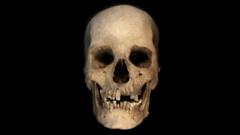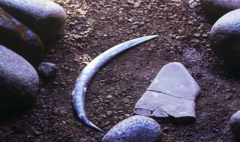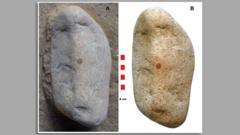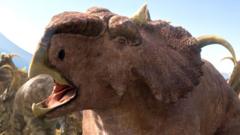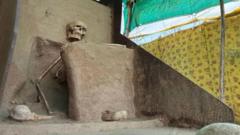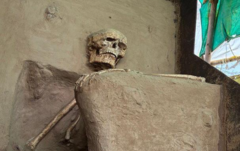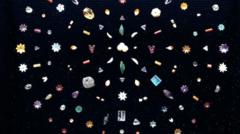"A significant excavation in Pompeii has revealed an opulent bathhouse from the Roman era, complete with intricate features and tragic remnants of its last inhabitants, showcasing both wealth and sorrow before the eruption of Mount Vesuvius."
"Unveiling the Luxurious Bathhouse of Pompeii: A Century’s Discovery"
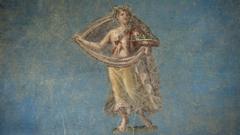
"Unveiling the Luxurious Bathhouse of Pompeii: A Century’s Discovery"
"Archaeologists uncover a lavish, ancient bathhouse in Pompeii, bringing insights into Roman luxury and the tragedy of the eruption."
After lying buried under layers of volcanic ash for two millennia, a remarkable excavation in Pompeii, Italy, has uncovered a lavish private bathhouse, deemed a "once-in-a-century" find by experts. This opulent complex, which may be the largest of its kind discovered in the ancient city, features a series of hot, warm, and cold rooms, adorned with exquisite frescoes and a substantial plunge pool.
Dr. Gabriel Zuchtriegel, director of the Archaeological Park of Pompeii, shared insights into this extraordinary discovery with BBC News, stating, "These spaces embody the 'Pompeii effect'—it feels like the inhabitants left moments ago." The bathhouse forms part of a grand residence that archaeologists have been revealing over the past two years, during a monumental excavation project.
The bathhouse's changing room boasts vibrant red walls and a beautifully designed mosaic floor. Additionally, two skeletons found within the residence tell a haunting story of the eruption of Mount Vesuvius in 79 AD. One skeleton belonged to a woman between the ages of 35 and 50, found clutching jewelry and coins, while the other belonged to a young man, indicating the chaos and tragedy faced by the residents as they sought refuge from the deadly pyroclastic surge.
"This is a dramatic site, and every find here tells a part of the overarching story," noted Dr. Ludovica Alesse, a conservator at Pompeii. Much of the ancient city remains concealed beneath the remnants of the catastrophic eruption, but the recent dig has provided invaluable insights into Roman life. A documentary series, "Pompeii: The New Dig," being filmed by the BBC alongside the archaeologists, captures the essence of these findings.
Excavations have exposed not just the bathhouse but an entire city block, including additional structures like a bakery and a laundry, suggesting these facilities belonged to a wealthy individual—likely Aulus Rustius Verus, an influential figure in Pompeii’s political landscape. According to Dr. Zuchtriegel, the bathhouse is a testament to its owner's elite status, as only a few homes in Pompeii featured such lavish private bath complexes.
The bathhouse, which could accommodate 20 to 30 people in its cold plunge pool, invites speculation about the social gatherings that once filled its beautifully painted rooms. Patrons would indulge in the sauna-like hot room before moving on to the elegant warm room for oil treatments, culminating in relaxation in the frigidarium, decorated with splendid frescoes.
As excavations continued, a stark juxtaposition emerged between the luxurious life depicted within the bathhouse and the more grim realities showcased by the discovery of the two skeletons. In a cramped room a few steps away, the remains of the victims highlighted the personal tragedy inflicted during the eruption, with the bodies positioned in a manner suggesting they sought safety but ultimately succumbed to the disaster.
As archaeologists uncover more remnants and artifacts, the rich history of Pompeii is continually revealed. This latest excavation will not only enhance our understanding of life in ancient Rome but also provide insight into the disparities between the lives of the affluent and their laborers.
The excavation is nearing completion, and although limited visitors can observe its progress, it promises to eventually open to the public, allowing everyone to learn about the lives that were forever altered by the eruption's devastation. Each day brings new surprises to the archaeologists, making this an extraordinary period for research and discovery in Pompeii.





